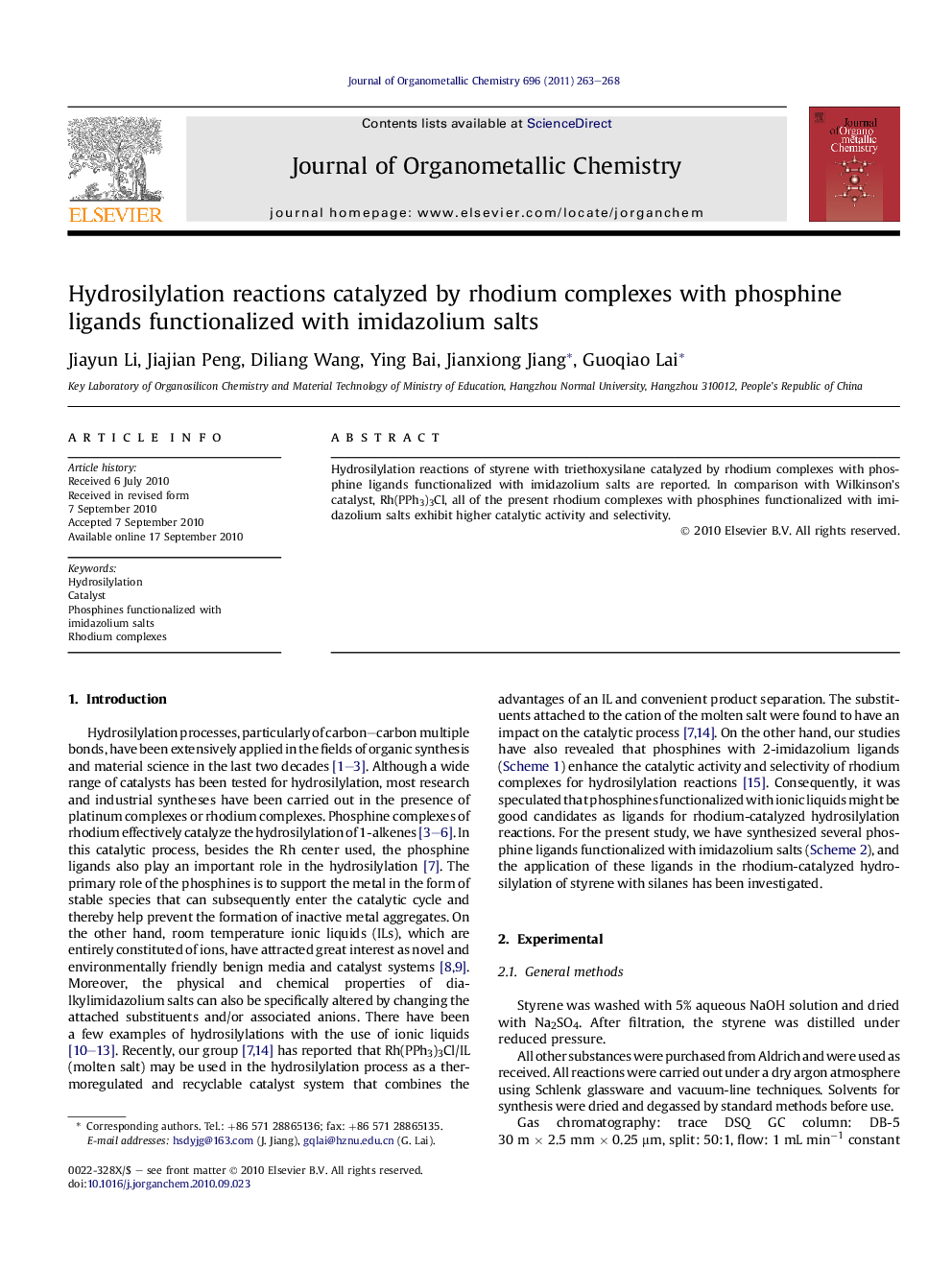| Article ID | Journal | Published Year | Pages | File Type |
|---|---|---|---|---|
| 1324885 | Journal of Organometallic Chemistry | 2011 | 6 Pages |
Hydrosilylation reactions of styrene with triethoxysilane catalyzed by rhodium complexes with phosphine ligands functionalized with imidazolium salts are reported. In comparison with Wilkinson’s catalyst, Rh(PPh3)3Cl, all of the present rhodium complexes with phosphines functionalized with imidazolium salts exhibit higher catalytic activity and selectivity.
Graphical abstractHydrosilylation reactions of styrene with triethoxysilane catalyzed by rhodium complexes with phosphine ligands functionalized with imidazolium salts are reported. In comparison with Wilkinson’s catalyst, Rh(PPh3)3Cl, all of the present rhodium complexes with phosphines functionalized with imidazolium salts exhibit higher catalytic activity and selectivity.Figure optionsDownload full-size imageDownload as PowerPoint slideResearch highlights► Rh(PPh3)3Cl, all of the present rhodium complexes with phosphines functionalized with imidazolium salts exhibit higher catalytic activity and selectivity. ► Our synthetic method is based on the quaternization of N-alkylimidazoles with Br(CH2)nCl (n=2 or 3) to give1-(n-chloroalkyl)-3-alkyl-imidazolium salts, followed by nucleophilic substitution with LiPPh2 to produce the desired ligands. ► Phosphines bearing imidazolium moieties may function as ambivalent P, C-donor systems, with the electron-rich imidazolium moiety providing a suitable modification that stabilizes the Rh-phosphine, which may be due to formation of Rh-NHC complex during the catalytic process. ► The RhCl3-4c/BMimPF6 catalyst system could be reused without noticeable loss of catalytic activity or selectivity.
